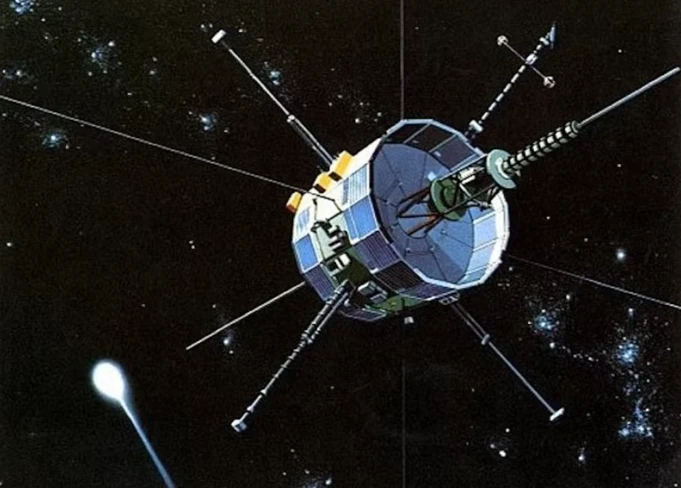The universe is vast and full of mysteries, and one of the most fascinating objects in the night sky is comets. These celestial bodies have captivated humans for centuries with their fiery tails and enigmatic origins. In this article, we will delve into the exploration of comets, from ancient encounters to present-day missions and future endeavors. Join us as we embark on a journey through time and space to unravel the secrets of these elusive cosmic wanderers. So let’s take a closer look at The Exploration of Comets: Past, Present, and Future Missions.
Contents
- Understanding Comets
- Past Missions
- Present Endeavors
- Future Missions
- Conclusion
-
Frequently Asked Questions
- 1. How are comets formed?
- 2. Why do comets have tails?
- 3. How big are comet nuclei?
- 4. Can comets pose a threat to Earth?
- 5. How do scientists study comets?
- 6. Can comets contain organic molecules?
- 7. Have any space missions successfully landed on comets?
- 8. What is the significance of studying comets?
- 9. Are comets visible from Earth?
- 10. Are there plans for future comet exploration missions?
- References
-
Frequently Asked Questions
- 1. How are comets formed?
- 2. What is the purpose of exploring comets?
- 3. How do past missions contribute to our knowledge of comets?
- 4. What was the significance of the Deep Impact mission?
- 5. How did the Rosetta-Philae mission revolutionize our knowledge of comets?
- 6. What is the objective of ESA’s Comet Interceptor mission?
- 7. What is the significance of NASA’s Comet Astrobiology Exploration Sample Return mission?
- 8. How does JAXA’s Comet Astrobiology Exploration Sample Return mission contribute to astrobiology?
- 9. What makes comets different from other celestial bodies?
- 10. How do comets contribute to the delivery of water on Earth?
- References
- Read More
Understanding Comets
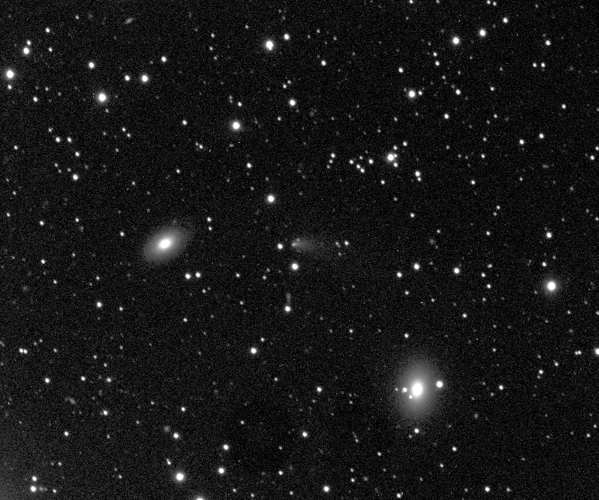
Comets are celestial bodies that originate from the outer reaches of the solar system. They are composed primarily of ice, dust, and rocky materials. The core of a comet, known as the nucleus, is relatively small, typically ranging from a few hundred meters to a few kilometers in diameter. As a comet approaches the Sun, the heat causes the ice in the nucleus to vaporize, creating a glowing coma and a tail that can stretch for millions of kilometers. The tail always points away from the Sun due to the pressure of the solar wind.
Comets are believed to be remnants from the early formation of the solar system, providing valuable insights into the conditions and materials present during that time. Scientists study comets to better understand the composition and structure of these celestial bodies, as well as their role in the formation of planets and the evolution of our solar system.
Through the study of comets and their composition, scientists can gain insights into the presence of organic molecules, including amino acids and water, which are essential for the development of life. The exploration and understanding of comets have a significant impact on our understanding of the origins of life in the universe. The study of comets also sheds light on the dynamics of the solar system, including the movement and interaction of celestial objects.
To gather data about comets, scientists use various instruments and techniques. Space missions equipped with cameras, spectrometers, and other scientific instruments have provided invaluable information about the physical and chemical properties of comets. By analyzing the data obtained from these missions, scientists can uncover important clues about the formation and evolution of comets.
Understanding the nature of comets is vital for astronomers as they explore further into the depths of space and seek answers to fundamental questions about the origins of our universe. The more we know about comets, the more we can uncover the secrets of our cosmic neighborhood and the mysteries of celestial objects that surround us.
Interested in delving into the significance of constellations in ancient astrology? Check out our article on The Significance of Constellations in Ancient Astrology for a fascinating journey through the zodiac and the stars. Understanding the connections between zodiac sign pairs and their traits can provide insights into various aspects of our lives and personalities.
Past Missions
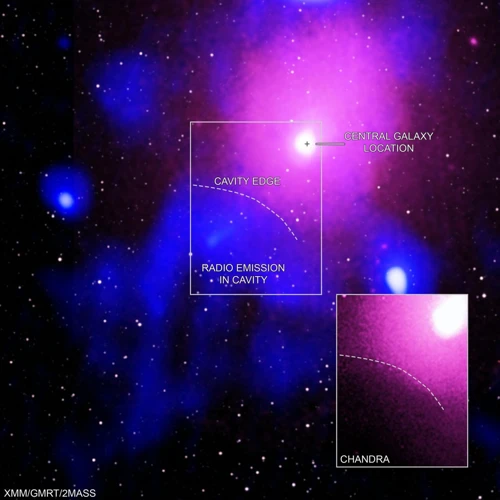
Throughout history, humanity has been intrigued by comets, leading to several past missions dedicated to their exploration. These missions have played a crucial role in expanding our knowledge and understanding of these enigmatic celestial objects. Early encounters with comets provided basic observations and laid the foundation for further exploration. The Comet Halley Missions were significant milestones in cometary exploration, with spacecrafts such as Giotto providing close-up images of the nucleus of Comet Halley in 1986. This mission provided valuable data on the composition and structure of comets. Another notable mission was Deep Impact, which launched a probe that intentionally collided with Comet Tempel 1 in 2005, yielding critical insights into the interior of comets and the materials they contain. These past missions have paved the way for our present and future endeavors in unraveling the mysteries of comets and their impact on our understanding of the universe. If you’re curious to learn about the fascinating traits of zodiac sign pairs, check out our article on Zodiac Sign Pairs and Their Traits for a deeper understanding of astrology and its significance in our lives.
1. Early Encounters
During the early history of astronomy, comets were viewed with both awe and fear. Ancient civilizations recorded their observations of comets, often associating them with significant events or divine omens. These early encounters with comets played a crucial role in shaping our understanding of these celestial objects.
One of the earliest recorded sightings of a comet dates back to ancient China in 1054 AD. Chinese astronomers chronicled the appearance of a bright “guest star” that remained visible for about two weeks. This celestial event, now known as the Crab Supernova, left behind a remnant called the Crab Nebula. This encounter highlighted the connection between comets and other cosmic phenomena, expanding our understanding of the universe’s complexity.
In 1680, the Great Comet of 1680 captured the attention of the scientific community. Astronomer Gottfried Kirch observed and documented this spectacular comet, which was visible to the naked eye for several months. The Great Comet of 1680 paved the way for the study of comets as astronomers began to develop more advanced telescopes and observational techniques.
Another notable early encounter with a comet was Halley’s Comet. Discovered by Edmond Halley in 1705, this periodic comet has been observed throughout history, with documented appearances dating back to 240 BC. Halley predicted the return of the comet in 1758, based on his calculations of its orbit. This successful prediction reinforced the understanding that comets follow predictable paths in the solar system.
Early encounters with comets sparked curiosity and led to the development of more systematic approaches to studying these phenomena. Astronomers began to observe comets using telescopes, making detailed observations of their tails, morphology, and movement. These observations formed the foundation for understanding comets as objects that originate from the outer regions of the solar system and are composed of volatile materials that react to the Sun’s heat.
Curious about the lifespan of black holes? Explore our article on The Lifespan of Black Holes to uncover the mysteries behind these enigmatic cosmic entities. From stellar evolution to the event horizon, understanding the lifespan and evolution of black holes is crucial in expanding our knowledge of the universe’s most powerful phenomena.
2. Comet Halley Missions
The exploration of comet Halley has been a significant milestone in the study of comets. The comet, named after astronomer Edmond Halley, has a rich history of missions aimed at unlocking its secrets. Here are some of the notable Comet Halley missions:
1. European Space Agency’s Giotto Mission: The Giotto spacecraft was launched in 1985 specifically to study comet Halley. It successfully approached within 600 kilometers of the nucleus of the comet, capturing detailed images of its core. Giotto also measured the composition and density of the coma, providing valuable data on the structure and composition of comet Halley.
2. Soviet Vega 1 and Vega 2 Missions: Launched in 1984, these twin spacecraft were part of the Soviet Vega program. They carried a variety of instruments to study the nucleus, coma, and tail of the comet. The Vega missions provided important data on the chemical composition of comet Halley and its interaction with the solar wind.
3. Japanese Sakigake and Suisei Missions: In 1985, Japan’s space agency, JAXA, launched the Sakigake and Suisei spacecraft to study comet Halley. While Sakigake was primarily a test mission for deep space exploration, it still managed to make valuable observations of the comet. Suisei, on the other hand, focused on capturing images of the comet’s nucleus and coma.
4. International Halley Watch: Although not a specific mission, the International Halley Watch was a coordinated effort among different countries and organizations to observe and study comet Halley during its 1986 apparition. This collaborative effort enabled scientists worldwide to gather a wealth of data and make important discoveries about the comet.
These missions to comet Halley provided groundbreaking insights into the nature and behavior of comets. Scientists gained valuable information about the composition, structure, and dynamics of comets, including the presence of various gases and dust particles in the coma. This knowledge not only deepened our understanding of comet Halley but also contributed to our broader comprehension of comets as a whole.
Curious about other remarkable space phenomena? Discover the fascinating lifespan of black holes in our article on The Lifespan of Black Holes. Explore the evolution and fascinating characteristics of these enigmatic cosmic entities that continue to astound and perplex astronomers.
3. Deep Impact
The Deep Impact mission, launched by NASA in 2005, was a groundbreaking endeavor aimed at studying the interior of a comet. The primary objective of the mission was to create an impact on the surface of comet Tempel 1 and analyze the resulting debris. This bold mission aimed to provide insights into the composition and structure of comets and shed light on the early formation of our solar system.
To achieve this, the Deep Impact spacecraft deployed a smaller probe called the “impactor” towards the comet’s nucleus. As the impactor collided with the surface of Tempel 1, it released a tremendous amount of energy, creating a massive crater and ejecting debris from the comet’s interior. This event marked the first time that humans could witness the interior of a comet in such detail.
The impact produced a plume of dust and gas, which was then observed and analyzed by the spacecraft’s flyby spacecraft, which was equipped with a suite of scientific instruments. By examining this debris, scientists could gather valuable information about the composition of the comet, including the presence of water, volatiles, and organic molecules.
The Deep Impact mission provided significant discoveries about the nature and evolution of comets. It revealed that comets are not uniform objects but rather have diverse compositions within their nuclei. The mission’s findings challenged previous assumptions about the homogeneous nature of comets and provided evidence for the presence of complex organic compounds.
The mission had a profound impact on our understanding of the formation and composition of comets. Scientists discovered that the crater created by the impact was not a simple hole but a complex structure with layers and stratigraphy. By studying the inner layers of the comet, scientists gained insights into its history and the processes that shaped it over time.
The Deep Impact mission paved the way for future missions and expanded our knowledge of comets’ characteristics. It demonstrated the feasibility of studying the interiors of comets and highlighted the importance of direct measurements for a comprehensive understanding of these celestial objects.
The impact of the Deep Impact mission extended beyond its scientific contributions. It sparked considerable public interest and engagement with space exploration, inspiring a new generation of scientists and astronomers. The mission demonstrated the incredible technological achievements that enable humans to explore and unravel the mysteries of the cosmos.
Curious to learn more about the lifespan of black holes? Dive into our article on The Lifespan of Black Holes to explore the fascinating phenomenon of these enigmatic cosmic entities. Discover how black holes form, evolve, and ultimately meet their cosmic fate.
Present Endeavors
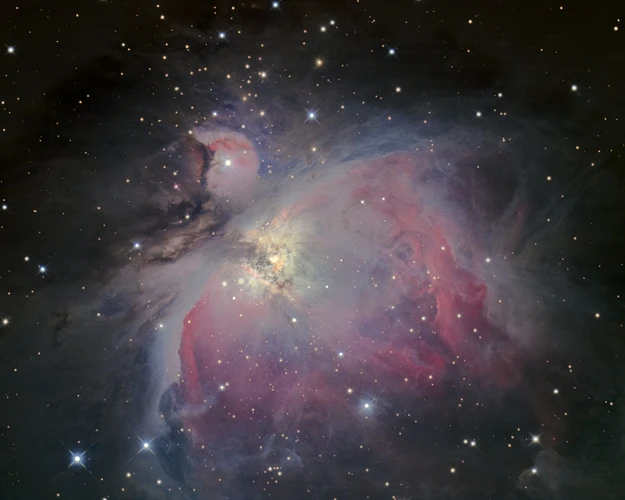
Present Endeavors: In the present era, scientists and space agencies worldwide continue to undertake groundbreaking missions to study comets and expand our knowledge of these celestial wonders. One notable mission is the Rosetta-Philae Mission, led by the European Space Agency (ESA). The mission’s primary objective was to rendezvous with Comet 67P/Churyumov-Gerasimenko and deploy the Philae lander to its surface. This historic mission provided unprecedented close-up images and valuable data about the comet’s composition and structure. Another significant mission is the Stardust Mission conducted by NASA, which collected samples of a comet’s coma and interstellar dust particles for analysis back on Earth. The mission utilized a highly innovative sample return capsule that successfully returned to Earth in 2006. Additionally, the upcoming Comet Interceptor mission, a collaborative effort by the European Space Agency (ESA), will study an undiscovered comet, providing valuable insights into the early stages of our solar system. These present-day endeavors demonstrate the continued dedication of scientists and space agencies to uncovering the secrets of comets and unravel the mysteries of our cosmic neighborhood.
1. Rosetta-Philae Mission
The Rosetta-Philae mission was a groundbreaking endeavor by the European Space Agency (ESA) that aimed to unlock the secrets of comets by studying Comet 67P/Churyumov-Gerasimenko. Launched in 2004, the mission consisted of a spacecraft called Rosetta and a lander named Philae.
Arriving at the comet in 2014, Rosetta became the first spacecraft in history to orbit a comet. This allowed for close observation and data collection over an extended period. The mission provided valuable insights into the composition, structure, and activity of comets.
One of the mission’s highlights was the successful landing of Philae on the surface of the comet in November 2014, marking the first-ever controlled touchdown on a comet. Philae’s instruments were designed to analyze the surface and subsurface of the comet, providing crucial data on its physical properties.
However, the landing didn’t go entirely as planned, as Philae ended up in a shaded area that limited its access to sunlight. This hindered its ability to recharge its solar-powered batteries, causing it to enter hibernation after about three days. Despite this setback, valuable data were collected during Philae’s brief operational phase, giving scientists valuable insights into the composition of the comet.
The Rosetta spacecraft continued to study the comet from orbit, taking high-resolution images and collecting data about its nucleus, coma, and tail. It also observed the changes in the comet’s activity as it approached the Sun. The mission provided valuable information about the organic molecules present on the comet’s surface, including the detection of amino acids, which are the building blocks of life.
In 2016, the Rosetta spacecraft was intentionally crash-landed onto the comet’s surface, marking the end of the mission. This deliberate impact provided additional data and allowed scientists to study the interior structure of the comet.
The Rosetta-Philae mission revolutionized our understanding of comets, providing a wealth of data and insights into the origins of our solar system. The mission’s findings have shed light on the role comets may have played in delivering water and organic compounds to Earth, potentially contributing to the emergence of life on our planet.
This Rosetta-Philae mission was an extraordinary achievement in space exploration, paving the way for future missions that seek to uncover more about the mysteries of comets and our place in the universe.
2. Stardust Mission
The Stardust mission, which was launched by NASA, was specifically designed to study a comet named Wild 2. The primary objective of this mission was to collect particles from the comet’s coma (the glowing cloud of gas and dust surrounding the nucleus) and return them to Earth for analysis. This was the first time that samples from a comet were brought back to our planet.
The spacecraft used a unique technique called aerogel to capture the cometary particles. Aerogel, also known as “solid smoke” or “frozen smoke,” is an extremely light and porous material that is primarily made up of silica (a compound commonly found in beach sand). It was used as a collector for the cometary particles because its lightweight nature allowed it to slow down the high-speed particles without completely vaporizing them upon impact.
During its mission, the Stardust spacecraft performed a flyby of comet Wild 2 in January 2004, coming within 149 miles (240 kilometers) of its nucleus. As it approached the comet, the spacecraft deployed a tennis racket-shaped collector filled with aerogel. The collector successfully captured cometary particles, including dust grains and volatile gases, during the encounter.
In January 2006, the spacecraft journeyed back to Earth and released a return capsule containing the precious comet samples. The capsule then reentered Earth’s atmosphere and parachuted down to the Utah Test and Training Range, where it was recovered and transported to a dedicated cleanroom facility for analysis.
The Stardust mission provided scientists with a treasure trove of information about comets and the formation of our solar system. Analysis of the captured particles revealed complex organic compounds and amino acids, which are the building blocks of life as we know it. This discovery suggests that comets may have played a significant role in delivering the necessary ingredients for life to Earth early in its history.
The Stardust mission marked a breakthrough in our understanding of comets and their composition. It demonstrated the feasibility of collecting samples from comets and analyzing them in terrestrial laboratories. The data obtained from this mission continues to provide valuable insights into the origin and evolution of comets and their potential role in the emergence of life on Earth.
3. Comet Interceptor
Comet Interceptor is an upcoming mission led by the European Space Agency (ESA) that aims to study a comet entering our solar system for the first time. It is an innovative concept that involves three spacecraft working together to observe and analyze the comet from different angles and distances.
The main goal of the Comet Interceptor mission is to gather important data about the composition, structure, and behavior of the incoming comet. By studying a pristine and untouched comet, scientists hope to gain insights into the early stages of the formation of the solar system and the building blocks of life.
The mission will consist of a mothership spacecraft and two smaller autonomous probes. The mothership will act as a central hub and will carry the two probes to the target comet. Once near the comet, the probes will separate and approach the nucleus from different directions, enabling comprehensive observations.
The mothership will be equipped with a suite of instruments, including cameras, spectrometers, and dust analyzers. These instruments will capture high-resolution images, measure the chemical composition of the comet, and analyze the particles and gases in its vicinity.
One of the unique aspects of the Comet Interceptor mission is its adaptive nature. Unlike traditional space missions that are planned years in advance, the goal of Comet Interceptor is to rapidly respond to the discovery of a new comet. It aims to intercept a comet that is entirely new to our solar system, providing a never-before-seen opportunity to study and understand these mysterious objects.
The Comet Interceptor mission represents a significant step forward in our exploration of comets. It promises to provide valuable insights into the origins of our solar system and the role of comets in the development of life. By combining cutting-edge technology and adaptive planning, this mission has the potential to revolutionize our understanding of cometary science.
The Comet Interceptor mission holds great promise for uncovering new discoveries and expanding our knowledge of the universe. It represents a collaborative effort between ESA and other international partners, demonstrating the global interest in unlocking the secrets of comets.
Learn more about other future missions exploring comets and their significance in astrobiology in our detailed article on Future Missions.
Future Missions
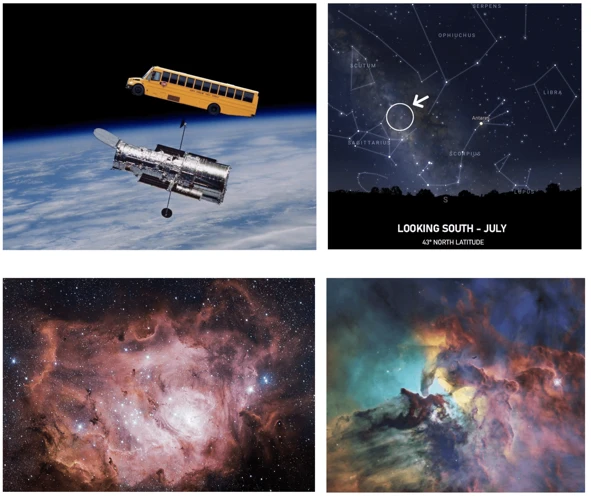
The exploration of comets continues to evolve with advancements in technology and space missions. Scientists and space agencies around the world have exciting plans for future missions to study comets in even greater detail. One such mission is the ESA’s Comet Interceptor. This mission, scheduled to launch in the 2030s, aims to intercept a comet that is visiting our inner solar system for the first time. The spacecraft will rendezvous with the comet and study its composition, structure, and properties to gain further insights into the early formation of our solar system. Another promising mission is the NASA’s Comet Astrobiology Exploration Sample Return. This ambitious mission plans to return samples of a comet back to Earth for detailed analysis. By examining these samples in laboratories on Earth, scientists hope to unravel the complex organic chemistry of comets and learn more about the building blocks of life. Additionally, the JAXA’s Comet Astrobiology Exploration Sample Return mission is also in the works, aiming to collect samples from a different comet and bring them back to Earth for analysis. These future missions hold great potential for uncovering valuable information about the origins of comets, the formation of our solar system, and the potential for life beyond Earth.
1. ESA’s Comet Interceptor
ESA’s Comet Interceptor is an upcoming mission that aims to study a comet in its pristine state, untouched by the heat and radiation of the Sun. This ambitious project, set to launch in the early 2030s, is unique in its approach to cometary exploration. The mission involves the use of three spacecraft, each with a distinct role in unraveling the mysteries of comets.
The first spacecraft, known as the Mothercraft, will serve as the main platform for gathering data and conducting observations. It will carry a suite of scientific instruments designed to measure the composition, structure, and activity of the target comet. The Mothercraft will also release two smaller spacecraft, called the Daughtercrafts, to observe the comet from different angles and gather complementary scientific data.
One of the key objectives of the Comet Interceptor mission is to reach a comet that is on its first journey into the inner solar system. By studying a pristine, untouched comet, scientists hope to gain insights into the early stages of cometary formation and evolution. This mission will allow scientists to observe the development of the coma and tail of a comet as it approaches the Sun, shedding light on the processes that shape these celestial bodies.
The Comet Interceptor mission is a joint effort between the European Space Agency (ESA) and several international partners. This collaboration ensures a diversity of expertise and resources to maximize the mission’s scientific output. By bringing together scientists from different countries and disciplines, the mission aims to foster collaboration and advance our understanding of comets.
The launch of ESA’s Comet Interceptor is an exciting prospect for the field of cometary science. The mission holds the promise of revolutionizing our understanding of these enigmatic objects and providing insights into their role in the formation and evolution of the solar system. As we eagerly await the launch of this ambitious mission, scientists and space enthusiasts alike anticipate a new era of cometary exploration and discovery.
Curious about other future missions in the exploration of comets? Explore our article on NASA’s Comet Astrobiology Exploration Sample Return to learn about the next frontier in comet exploration and the search for signs of life beyond Earth.
2. NASA’s Comet Astrobiology Exploration Sample Return
NASA’s Comet Astrobiology Exploration Sample Return mission, also known as CAESAR, is an ambitious project aimed at collecting samples from a comet and bringing them back to Earth for further analysis. This mission is part of NASA’s New Frontiers Program, which focuses on exploring various destinations in our solar system.
The primary objective of the CAESAR mission is to study the composition of comets and gain insights into the organic materials and volatile compounds they contain. By analyzing these samples, scientists hope to unlock clues about the chemical building blocks of life and the role comets may have played in seeding Earth with essential ingredients for the emergence of life.
To achieve this goal, the CAESAR spacecraft will be equipped with cutting-edge instruments designed to collect and analyze samples from the nucleus of a comet. The mission aims to target a comet that has not been previously visited by a spacecraft, providing a unique opportunity to study pristine material that has been untouched since the formation of the solar system.
The CAESAR spacecraft will approach the comet, deploy a sampling mechanism, and carefully collect a variety of samples from different regions of the nucleus. These samples will be stored securely in a sealed capsule to protect them during the spacecraft’s journey back to Earth. Upon reentry into our planet’s atmosphere, the capsule will be recovered and delivered to a specialized laboratory for detailed analysis.
The analysis of the comet samples retrieved by the CAESAR mission will be conducted using state-of-the-art scientific techniques. Scientists will study the chemical and isotopic compositions of the collected materials, searching for organic compounds and other molecules that can shed light on the origins of life in our solar system.
The CAESAR mission represents a significant step forward in our understanding of comets and their potential role in the development of life. By examining the samples returned from a comet, scientists hope to gain a deeper understanding of the early solar system and the conditions that existed when life was first taking shape on Earth.
Interested in learning more about other future missions to explore comets? Check out our comprehensive guide to upcoming space endeavors in Future Missions, where you can find information about other exciting projects, including ESA’s Comet Interceptor and JAXA’s Comet Astrobiology Exploration Sample Return missions.
3. JAXA’s Comet Astrobiology Exploration Sample Return
JAXA, the Japan Aerospace Exploration Agency, has been at the forefront of space exploration for decades, and their mission to study comets is no exception. JAXA’s Comet Astrobiology Exploration Sample Return mission aims to collect samples from a comet and bring them back to Earth for detailed analysis.
The mission will begin with the launch of a spacecraft to rendezvous with a comet as it approaches the Sun. This spacecraft will carry a suite of scientific instruments designed to study the composition, structure, and dynamics of the comet. These instruments will provide valuable data on the comet’s organic molecules, water content, and the presence of amino acids and other building blocks of life.
Once the spacecraft reaches the comet, it will carefully collect samples from its surface using a specialized sampling mechanism. The collected samples will be stored in a sealed container to preserve their integrity during the journey back to Earth.
The crucial aspect of JAXA’s mission is the safe return of the collected samples. Upon reentry into Earth’s atmosphere, the sample container will be protected by a heat shield to withstand the extreme temperatures. The spacecraft will then deploy parachutes to ensure a gentle landing in a designated retrieval area.
Upon retrieval, the samples will be transported to a specialized laboratory for thorough analysis. Scientists will use state-of-the-art techniques to examine the collected material, including microscopy, spectroscopy, and chemical analysis. These studies will provide invaluable information about the composition and characteristics of the comet, offering insights into the complex processes that occurred during its formation.
JAXA’s Comet Astrobiology Exploration Sample Return mission holds great potential for advancing our understanding of comets and their role in the origins of life. By analyzing the samples collected, scientists can explore how comets may have contributed to the delivery of essential molecules for the emergence of life on Earth. The mission will provide valuable information about the dynamics and evolution of comets, helping to piece together the puzzle of our solar system’s history.
JAXA’s Comet Astrobiology Exploration Sample Return mission represents a significant milestone in the study of comets. By bringing back samples from a comet, scientists can delve deeper into the mysteries of these celestial objects and gain insights into the origins of life in the universe. This mission showcases JAXA’s dedication to pushing the boundaries of exploration and expanding our knowledge of the cosmos.
Conclusion

In conclusion, the exploration of comets has been an ongoing endeavor that has spanned centuries. From the early observations of ancient civilizations to the cutting-edge technology of present-day space missions, our understanding of comets has evolved significantly. Through these endeavors, scientists have gained valuable insights into the formation and evolution of our solar system, as well as the potential for the existence of life beyond Earth.
Past missions, such as the encounters with Halley’s Comet and the Deep Impact mission, provided us with unprecedented data about the composition and structure of comets. These missions paved the way for present-day endeavors, such as the Rosetta-Philae and Stardust missions, which have expanded our knowledge even further.
Looking towards the future, exciting missions are in the works. The European Space Agency’s Comet Interceptor mission aims to explore a comet pristine from the outer reaches of the solar system. NASA’s Comet Astrobiology Exploration Sample Return mission and JAXA’s Comet Astrobiology Exploration Sample Return mission plan to return samples from a comet’s nucleus, providing us with detailed information about its composition and potential for sustaining life.
As we continue to explore and study comets, we are likely to discover even more intriguing findings that will deep our understanding of these mysterious celestial bodies. The secrets of comets hold the key to unraveling the mysteries of our universe and its origins.
In the grand journey of space exploration, comets have played a crucial role. From their mesmerizing appearances in the night sky to their scientific significance, these cosmic wanderers continue to captivate our imagination. The exploration of comets is an ongoing adventure that promises to reveal more about our place in the universe and the marvels that lie beyond.
- Understanding Comets: Comets are celestial bodies composed of ice, dust, and rocky materials. They provide insights into the early formation of the solar system and the presence of organic molecules.
- Past Missions: Early encounters, Halley’s Comet missions, and Deep Impact mission provided valuable data about the composition and structure of comets.
- Present Endeavors: Rosetta-Philae and Stardust missions continue to expand our knowledge of comets and their properties.
- Future Missions: Upcoming missions, including Comet Interceptor, Comet Astrobiology Exploration Sample Return by NASA and JAXA, aim to further explore the mysteries of comets.
Interested in ancient astrology and the significance of constellations? Explore our article on The Significance of Constellations in Ancient Astrology to learn more about how zodiac sign pairs and their traits can provide insights into our lives and personalities.
Frequently Asked Questions

1. How are comets formed?
Comets are believed to be formed from a mixture of icy materials, such as water, methane, and ammonia, along with dust and rocky particles. These materials came together in the outer regions of the solar system during its early formation.
2. Why do comets have tails?
When comets approach the Sun, the heat causes the icy nucleus to vaporize, releasing gas and dust particles. The pressure from the solar wind pushes these particles away from the Sun, forming the characteristic tail that we see.
3. How big are comet nuclei?
Comet nuclei can vary in size, typically ranging from a few hundred meters to a few kilometers in diameter. However, some comets have been discovered with nuclei reaching up to tens of kilometers in size.
4. Can comets pose a threat to Earth?
While the vast majority of comets pose no threat to Earth, there is a slight possibility of a comet collision. However, scientists closely monitor comets and their trajectories to ensure that any potential threats can be identified and mitigated.
5. How do scientists study comets?
Scientists study comets through various methods, including space missions. These missions deploy instruments such as cameras, spectrometers, and particle analyzers to gather data about the composition, structure, and behavior of comets.
6. Can comets contain organic molecules?
Yes, comets have been found to contain organic molecules, including amino acids and water. These molecules are essential building blocks for the formation of life, providing valuable insights into the possibility of life elsewhere in the universe.
7. Have any space missions successfully landed on comets?
Yes, the Rosetta mission by the European Space Agency successfully landed the Philae lander on the surface of comet 67P/Churyumov-Gerasimenko in 2014. The mission provided valuable data about the comet’s composition and structure.
8. What is the significance of studying comets?
Studying comets helps scientists understand the early conditions of the solar system and the formation of planets. It also provides insights into the origin of life and the dynamics of celestial objects in our solar system.
9. Are comets visible from Earth?
Yes, comets can sometimes be seen from Earth with the naked eye. Depending on their brightness and proximity to Earth, comets can be visible for several weeks or even months.
10. Are there plans for future comet exploration missions?
Yes, several space agencies, including ESA, NASA, and JAXA, have plans for future comet exploration missions. These missions aim to further advance our understanding of comets and uncover more secrets about their composition and origins.
References
Frequently Asked Questions

1. How are comets formed?
Comets are formed from a mixture of ice, dust, rocky material, and organic compounds. These materials come together in the outer regions of the Solar System, where they create a nucleus that is surrounded by a glowing coma, and in some cases, a tail.
2. What is the purpose of exploring comets?
The exploration of comets helps scientists better understand the origins of our Solar System and the building blocks of life. By studying comets, we can gain insights into the processes that occurred during the early stages of planetary formation.
3. How do past missions contribute to our knowledge of comets?
Past missions have provided valuable data about the composition, structure, and behavior of comets. They have helped scientists determine the presence of different elements and molecules in comets, which gives us a better understanding of the conditions in which comets formed.
4. What was the significance of the Deep Impact mission?
The Deep Impact mission was significant because it was the first mission that successfully impacted a comet nucleus. By studying the impact and the resulting debris, scientists were able to analyze the composition of the interior of the comet and learn more about its structure.
5. How did the Rosetta-Philae mission revolutionize our knowledge of comets?
The Rosetta-Philae mission was groundbreaking as it was the first mission to orbit and land on a comet. The data gathered by the mission improved our understanding of how comets evolve as they approach the Sun and provided valuable insights into the role of comets in delivering water to Earth.
6. What is the objective of ESA’s Comet Interceptor mission?
The objective of ESA’s Comet Interceptor mission is to study a pristine comet or interstellar object that is making its first journey into the inner regions of the Solar System. The mission aims to gather unique data that will help scientists investigate the origins of comets and their composition.
7. What is the significance of NASA’s Comet Astrobiology Exploration Sample Return mission?
The Comet Astrobiology Exploration Sample Return mission by NASA aims to collect samples from a comet’s surface and return them to Earth. This will allow scientists to study the organic compounds and potential traces of life that may exist on the comet, providing crucial insights into the origins of life in the universe.
8. How does JAXA’s Comet Astrobiology Exploration Sample Return mission contribute to astrobiology?
JAXA’s Comet Astrobiology Exploration Sample Return mission plans to collect samples from a comet and bring them back to Earth. By analyzing these samples, scientists can gain a deeper understanding of the organic compounds and complex molecules that may have played a role in the emergence of life on Earth.
9. What makes comets different from other celestial bodies?
Comets are different from other celestial bodies because they are composed of volatile materials, such as ice, that can vaporize when they approach the Sun. This vaporization creates a glowing coma and a tail that can extend for millions of kilometers. Additionally, comets have highly elliptical orbits that take them far away from the Sun and back again.
10. How do comets contribute to the delivery of water on Earth?
Comets are believed to have played a significant role in delivering water to Earth. The icy materials in comets can contain large amounts of water, and when a comet approaches the Sun, the heat causes the ice to vaporize, releasing the water vapor into space. Some of this water vapor eventually reaches Earth, contributing to the presence of water on our planet.

